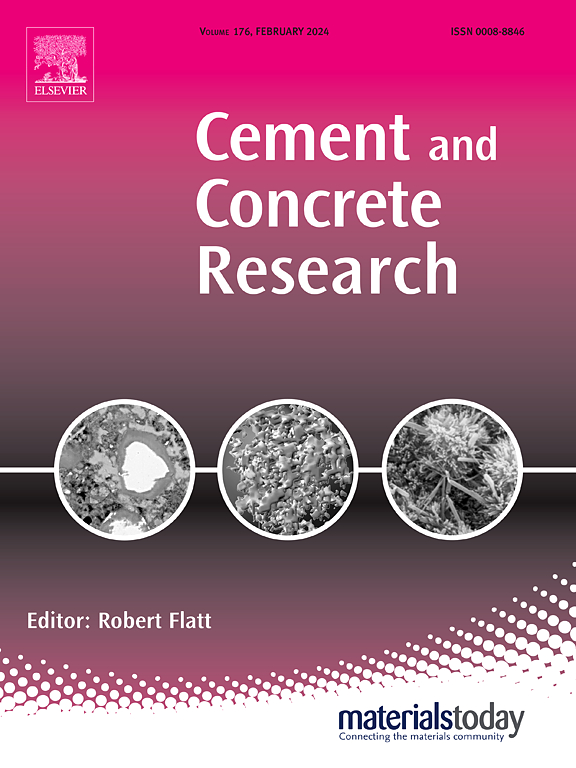三种不同有机膦酸对三斜型硅酸三钙的缓凝机理及微观结构演变
IF 13.1
1区 工程技术
Q1 CONSTRUCTION & BUILDING TECHNOLOGY
引用次数: 0
摘要
研究了不同官能团的有机膦酸(OPAs)对三斜硅酸三钙(C3S)熟料水化的抑制作用及其机理。特别研究了三种具有代表性的OPAs,即ATMP、HEDP和PBTC对C3S熟料吸附/络合行为、水化产物和微观结构特征的影响。OPAs对C3S熟料水化的阻滞是由静电吸附和阳离子络合的协同作用控制的,可能涉及分子间的自缩聚。ATMP主要依靠Ca2+络合通过其[-C-PO (OH)2]基团,形成低溶解度的沉淀物,抑制水合作用。HEDP在其[-C-PO (OH)2]和(-OH)基团的驱动下,结合了强络合作用和分子间自缩聚作用,生成了致密的三维聚合物,增强了位阻,而PBTC则通过表面吸附和自缩聚作用。HEDP > PBTC >; ATMP是由官能团的协同作用引起的:[-C-PO (OH)2]和(-OH)基团的协同作用最大,[-C-PO (OH)2]和(-COOH)基团的协同作用较弱,而分离的[-C-PO (OH)2]基团的阻滞能力最小。本文章由计算机程序翻译,如有差异,请以英文原文为准。
Retardation mechanisms and microstructure evolution of triclinic tricalcium silicate induced by three different organic phosphonic acids
This paper investigated the inhibition effects and mechanisms of organic phosphonic acids (OPAs) with distinct functional groups on triclinic tricalcium silicate (C3S) clinker hydration. In particular, the effects of three representative OPAs, namely ATMP, HEDP, and PBTC on adsorption/complexation behavior, hydration products, and microstructure characteristics of C3S clinker were studied. OPAs retardation of the C3S clinker hydration was governed by synergistic interactions of electrostatic adsorption, and cationic complexation, potentially involving intermolecular self-polycondensation. ATMP primarily relied on Ca2+ complexation through its [–C-PO(OH)2] groups, forming low-solubility precipitates that inhibited hydration. HEDP combined strong complexation with intermolecular self-polycondensation, driven by its [–C–PO(OH)2] and (–OH) groups, generating dense three-dimensional polymers that enhanced steric hindrance, while PBTC operated through surface adsorption and self-polycondensation. The revealed retardation efficiency hierarchy (HEDP > PBTC > ATMP) arose from functional group synergy: the maximal inhibition was provided by synergy of [–C–PO(OH)2] and (–OH) groups, a weaker one-by that of [–C–PO(OH)2] and (–COOH) groups, while isolated [–C–PO(OH)2] groups had the minimal retarding capacity.
求助全文
通过发布文献求助,成功后即可免费获取论文全文。
去求助
来源期刊

Cement and Concrete Research
工程技术-材料科学:综合
CiteScore
20.90
自引率
12.30%
发文量
318
审稿时长
53 days
期刊介绍:
Cement and Concrete Research is dedicated to publishing top-notch research on the materials science and engineering of cement, cement composites, mortars, concrete, and related materials incorporating cement or other mineral binders. The journal prioritizes reporting significant findings in research on the properties and performance of cementitious materials. It also covers novel experimental techniques, the latest analytical and modeling methods, examination and diagnosis of actual cement and concrete structures, and the exploration of potential improvements in materials.
 求助内容:
求助内容: 应助结果提醒方式:
应助结果提醒方式:


